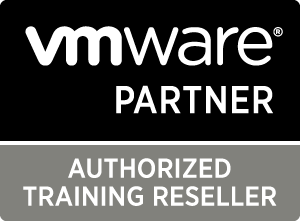VMware Horizon 7: Install, Configure, Manage plus App Volumes Fast Track [V7.10]
Price
No price found.
Duration
5 Days
Modality
Live Online
Course code
EDU-HICMAPFT710-OE

Price
No price found.
Duration
5 Days
Modality
Live Online
Course code
EDU-HICMAPFT710-OE

This five-day, extended hour course gives you the skills to deliver virtual desktops and applications through a single virtual desktop infrastructure platform. This course builds your skills in installing, configuring, and managing VMware Horizon® 7 through a combination of lecture and hands-on labs. You learn how to configure and deploy pools of virtual machines, how to manage the access and security of the machines, and how to provide a customized desktop environment to end users.
Build your skills in application management using VMware App Volumes and VMware Dynamic Environment Manager. You will learn how to use App Volumes to deliver applications and data to desktops and users in seconds and at scale. You will gain skills in managing application lifecycles from installation to update and replacement. You will also learn how to use Dynamic Environment Manager to provide personalization and dynamic policy configuration across virtual, physical, and cloud-based environments to simplify end-user profile management.
By the end of the course, you should be able to meet the following objectives:
Technical personnel who work in the IT departments of end-customer companies and people who are responsible for the delivery of remote or virtual desktop services
Customers attending this course should have, at a minimum, the following VMware infrastructure skills:
Attendees should also have the following Microsoft Windows system administration experience:
Technical personnel who work in the IT departments of end-customer companies and people who are responsible for the delivery of remote or virtual desktop services
Customers attending this course should have, at a minimum, the following VMware infrastructure skills:
Attendees should also have the following Microsoft Windows system administration experience:
Module Breakdown - For a course module breakdown click here
Course Introduction
Introduction to VMware Horizon
Horizon Connection Server
VMware Horizon Desktops
VMware Horizon Pools
VMware Horizon Client Options
Creating Automated Desktop Pools
Configuring and Managing Linked-Clone Desktop Pools
Creating and Managing Instant-Clone Desktop Pools
VMware Horizon Authentication and Certificates
Managing VMware Horizon Security
Profile Management Using Dynamic Environment Manager